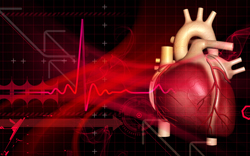Aiming at a better view of the aortic valve
A micro-to-macro material and structural (MMS) modelling approach can be effectively used to analyse biomaterials and biosystems. With this potential in mind, the 'Multiscale micro-to-macro material and structural models for aortic heart valves: native, porcine and prosthetic valves' (Multiscale biomech) project aims to refine existing MMS models for work on aortic valve (AV) tissue and structure. Researchers will work on developments and integration at the microscale so as to enable mechanical analysis of the AV structure at the macroscale. The EU-funded project deals with the analytical and computational mechanical modelling of native and prosthetic AV systems. Different aspects of the analytical and numerical work must be carried out; they form part of this project in order to ultimately generate realistic overall AV models for both normal and abnormal (pathology) native AVs. Work so far has concentrated on generating non-linear micromechanical models for the tissue material and integrating these into a multiscale finite-element analysis framework. This is aimed at generating the mechanical response and behaviour of AVs after in vitro and in vivo loadings. Another area of focus has to do with verifying various features of the AV system. The Multiscale biomech team is examining digital image correlation techniques for measuring AV tissue deformation under certain settings. to achieve analysis of multiscale materials and structures, researchers reformulated the high-fidelity generalised method of cells (HFGMC) modelling framework. HFGMC is a micromechanics model that can more accurately measure repeating cells within a graded (multiphase) structure. simulation experiments have also been conducted using 3D models to generate speed of flow in a constricted left coronary artery (LCA) with necrotic tissue. Significant changes in stress distribution can be evidenced at different sections of the LCA wall, with greater stress presenting at the LCA opening. the newly developed micromechanical model enables a more practical means of conducting simulations with homogenous plaque material, as the method provides information on overall mechanical stress and distribution of flow-induced stress. results here will drive development of imaging tools with a focus on the internal tissue parameters most important to diagnosis of diseased AV. As Multiscale biomech work progresses, project outcomes will contribute to the creation of novel simulation tools for studying both native AV systems and the design of better prosthetic AV systems.







